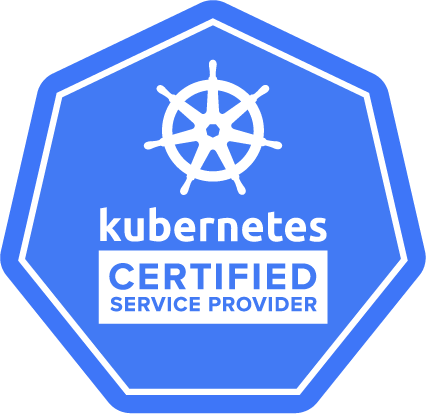One of the benefits of using open source software such as the storage solutions that the LINBIT® team develops is that you do not need to check in with anybody to get it, install it, and start using it. The open source model is especially conducive to homelab setups. People often use homelab setups to vet a given solution, either for nominal use in a home environment, or before deploying a solution in a production or enterprise environment.
Homelabbers are often early-adopters and can be a driving force behind testing and providing feedback about release candidate versions of software. Until this article, LINBIT blog writers have not discussed homelab setups. This is perhaps for the understandable reason that this is a corporate blog focused on the enterprise use cases that drive the financial reality of running a company that keeps its software in development and up-to-date with current technologies. However, interest in setting up LINBIT software in homelab environments that the team has heard from people at conferences, chatter within the LINBIT Community Forum, and mentions during the course of the team’s travels through the Internet tubes, warrant a discussion of the homelab topic and its value to the open source community.
The purpose of this article is to showcase two real-world homelab setups, and to show how you can get started using LINBIT software in a homelab environment.
Homelabbing LINSTOR in Kubernetes
A case study response that the LINBIT team received from a user in Germany highlights a homelab use case for LINSTOR® in Kubernetes. The user needed to find an alternative to a “typical NAS” which can be slow and a single point of failure on the hardware level, as a storage backbone for all services running in the user’s homelab. This prompted the homelabber to explore a clustered storage solution. The user also mentioned the importance of finding a “reliable, all-purpose, expandable, redundant storage [solution] with minimal [CPU] overhead and above average performance.”
After three months of evaluating potential solutions, such as MinIO, traditional RAID, Ceph, GlusterFS, and Longhorn, the homelabber settled on LINSTOR in Kubernetes. “The simplicity of the architecture along with the performance of the co-located storage and low [CPU] overhead were the main LINBIT advantages,” the user said. The LINBIT software the homelabber used were LINSTOR, DRBD®, and the CSI plugin for LINSTOR, all deployed by using the Piraeus Operator for Kubernetes. Piraeus Datastore (and its Operator) are the Cloud Native Computing Foundation (CNCF) upstream project for LINSTOR in Kubernetes. The user said that “any other solution that came close had too much [CPU] overhead or random degradation issues reported after prolonged use. The simplicity of [LINBIT software] architecture, along with the performance of the [replicated] storage, were the main value points.”
The user also reported no longer spending much time on maintenance of the storage layer and being able to quickly expand the available storage. Already the user reported replacing a few slower drives in the setup with faster ones with almost no effort and no service disruption, due to the highly available storage. Finally, the user said that overall storage speed has almost tripled compared to an old NAS.
While using Kubernetes to run workloads and services in a home might seem drastic, that is the freedom that open source software gives its users, to do with it as they find best suits their needs and interests. Sometimes even home environments might demand continuous uptime for services where being without one of the services might be a major inconvenience. This is increasingly true for homes running automation solutions such as Home Assistant.
Finally, the homelabber did mention some issues getting support for LINBIT software as a homelab user. This was in the days when LINBIT ran a Slack space for community support. Lessons were learned and since March 2024, LINBIT has the LINBIT Community Forum where LINBIT software users and the LINBIT team meet in a platform space, Discourse, more amenable to community support.
Homelabbing LINSTOR with Proxmox VE
Another case study response the LINBIT team received was from a US homelabber running a 3-node Proxmox cluster. The user reported learning about LINSTOR when stumbling upon a Linus Tech Tips video about using LINSTOR with Proxmox while researching alternatives to Ceph. The homelabber uses VMware vSAN at work but wanted to avoid that at home because “that has to be the least user-friendly experience of my life” and also had concerns about lack of VMware support for the different hardware on the home network: “a Lenovo x3650 running Unraid with a Proxmox VM (iSCSI vDisk to host), […] a Relion 2940 server, and a gaming PC which runs Proxmox and is the main compute node for the homelab.”
Besides VMware, the user also looked at Ceph and StarWind HCI as alternative solutions for storage high availability (HA) in the user’s homelab. The user cited ease of deployment, comprehensive documentation, good support from the LINBIT team, the freedom to use disparate hardware, and “diskless” mode access to storage as reasons for ultimately choosing LINSTOR as a clustered storage solution with Proxmox. Indeed, the user said that the only drive in the main compute node is a 16GB Optane drive to host Proxmox. Access to virtual machines (VMs) on clustered storage is done disklessly. The homelabber said, “The only quirk I’ve noticed [with accessing storage disklessly] is that sometimes VM and container migration can be so fast that the Proxmox GUI needs time to catch up.”
The homelabber’s own words describe the diskless use case in more detail: “[Accessing clustered storage disklessly] allows me to centralize the majority of my storage in systems that actually have the PCIe lanes to run so much NVMe and distribute it to nodes that are more constrained. For example, the nodes of the Relion 2940 are incapable of PCIe bifurcation, so without significant cost I would be unable to host more than a single M.2 [disk] in each node. With diskless deployment I can give each of these nodes access to our clustered storage solutions and not waste PCIe lanes or money on PCIe switches.
“With my gaming PC it’s even more exciting. Since it’s consumer grade hardware, my PCIe bandwidth is at a premium with only 24 lanes, and I don’t need a bunch of storage hogging them! Instead I can give my graphics card the full x16 bandwidth and even have room for high speed networking. This Proxmox host is the main interface for everything and everyone in the household and everyone gets to have their own personal VM. And as my household expands and more computers join the cluster we won’t have to waste money on extra hardware to store everything.”
Getting started using LINBIT software in a homelab
Hopefully these two homelab stories have piqued your interest or given you ideas for how you might try LINBIT software in your own homelab. The fastest routes to using LINBIT software in a homelab will be by using public package or container repositories to install it. LINBIT has these public package and container repositories:
- An Ubuntu PPA
- A Proxmox VE public package repository
- The Piraeus Datastore Operator for installing LINSTOR in Kubernetes
Getting started using LINSTOR in Kubernetes in a homelab
You can install LINSTOR in Kubernetes by using the upstream Cloud Native Computing Foundation (CNCF) sandbox project, Piraeus Datastore. With a Kubernetes cluster up and running, three kubectl commands (one is a kubectl wait command so perhaps only two “real” commands) will deploy LINSTOR in Kubernetes for you by using an Operator. If you just want to test the waters and do not have a full-blown Kubernetes cluster up and running, you might also hack (you are homelabbing after all) the instructions in this blog post about using LINSTOR in minikube to use the Piraeus Datastore Operator instead.
Getting started using LINSTOR with Proxmox VE in a homelab
You can use LINSTOR in a Proxmox VE cluster by installing the linstor-proxmox storage plugin for Proxmox. The LINSTOR User Guide has instructions for how to do this from public package repositories. Of course the plugin will not do you any good without the necessary LINSTOR stack (DRBD, LINSTOR, and related utilities) to compliment it. This repository not only contains the Proxmox plugin, but the entire LINBIT SDS stack, including DRBD, LINSTOR, and all user-space utilities. A “How to Set Up LINSTOR on Proxmox VE” article on the LINBIT blog takes you through the steps of installing LINSTOR with Proxmox in a hyperconverged setup.
Getting started using LINBIT software with other platforms
LINBIT software integrates with more platforms than Kubernetes and Proxmox VE. You can learn more about LINSTOR integrations from the LINSTOR User Guide.
If you are interested in HA and software-defined storage (SDS) storage for virtualization reasons, besides Proxmox and Kubernetes (using KubeVirt), CloudStack and OpenNebula might be the next platforms that you can most easily set up and explore in a homelab. I use the word “easily” here relative to setting up other platforms that are more difficult to set up such as OpenStack or OpenShift.
You are always free to install the LINBIT SDS stack from its open source codebase, for example, DRBD and its related userspace utilities, LINSTOR, DRBD Reactor as an alternative cluster resource manager, WinDRBD (DRBD for Windows servers), and others that you can find from the LINBIT GitHub project page. You can also download tar archives of LINBIT software source code from the downloads page on the LINBIT website.
However, the convenience of installing software from prebuilt packages cannot be denied. The LINBIT team maintains customer package repositories for LINBIT support customers. These repositories have packages for RPM and DEB based installations and support different 64-bit CPU architectures, such as amd64, arm64, ppc64le, and s390x. For running LINBIT software in a homelab, besides the earlier mentioned Proxmox public package repository, you can use the LINBIT PPA to install LINBIT software on the latest two Ubuntu LTS releases.
Of course there is nothing to prevent you as a homelabber from becoming a LINBIT support customer. There is even a download-only lower-price option that gives you access to LINBIT customer repositories, without a support option. You can learn more about this from the Solutions links on the LINBIT website.
Conclusion
Using LINBIT storage solutions in a homelab can be a rewarding experience for enthusiasts, professionals, and early adopters alike. Whether you are deploying LINSTOR within Kubernetes, integrating it with Proxmox, using DRBD on its own, or some other use case, using LINBIT software can give you a reliable, high-performance, and expandable storage foundation that mirrors its enterprise-grade capabilities. Homelab setups not only help users understand, test, and experiment with software, but can also serve practical purposes. As the two case studies in this article show, homelab users can improve storage speed, data redundancy, and manageability in a home environment, without constraining hardware choices. Homelabbing with LINBIT software is an excellent choice for those looking to bridge the gap between home and enterprise storage solutions.
If you are on a homelab journey with LINBIT software, the team wants to hear your story. The LINBIT Community Forum is an ideal space to ask questions, share experiences, and mingle with other homelabbers, enterprise users, and members of the LINBIT team. You can also reach out to the team through the LINBIT website.


